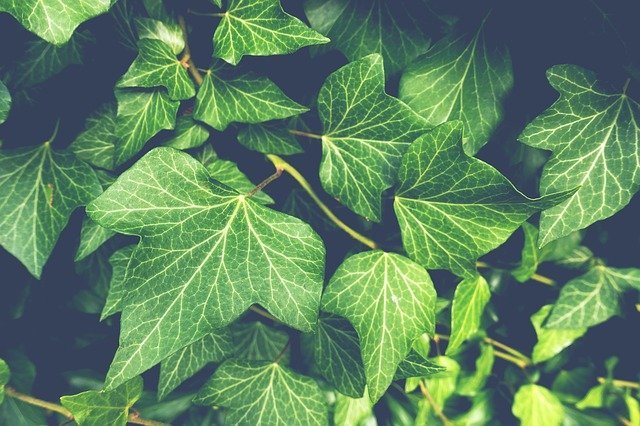
Ivy is a spontaneous plant used in herbal medicine for respiratory disorders and in cosmetics to counteract cellulite and orange peel skin.
Ivy (Hedera helix) is a plant belonging to the Araliaceae family. It is a very common climbing shrub in the woods, used in herbal medicine and phytotherapy for the treatment of respiratory disorders and in cosmetics to combat cellulite. Let’s find out more.
Properties of ivy
The ivy are used dried leaves rich in triterpene saponins, flavonoids, phenolic derivatives coumarin glycosides, phytosterols, alkaloids, minerals and other substances.
The medicinal use of ivy is very ancient: traditionally this plant is used for the treatment of numerous ailments, from hypertension to rheumatism, from cough to scabies.
Today, ivy is mainly used for inflammation of the bronchi and to reduce the secretions of viscous mucus and clear the airways.
As a cosmetic ingredient, ivy extract is used for its anti-cellulite action attributedto the presence of saponins.
Body creams that contain ivy are recommended to combat orange peel skin, localized fat deposits and to firm the skin that has lost tone and elasticity.
How to use
Indoor use
In herbal medicine and pharmacy you can find liquid and dry extracts to be used to treat the respiratory tract, quell cough and eliminate excess phlegm. It is important that ivy is purchased in herbal medicine since the drug must be titrated and standardized.
External use
The application of ivy-based cosmetic creams on the areas of the body most affected by cellulite is a classic remedy to counteract accumulations of fat and orange peel skin.
In northern Europe, both in Ireland and Scandinavia, there is an ancient use of the so-called “ivy water” to rinse the eyes in case of irritation, inflammation and infection.
Contraindications of ivy
Leaves and preparations based on ivy can cause contact allergies in sensitive subjects, generally not serious.
Prolonged use and overdose can also give gastrointestinal problems including vomiting and diarrhea, as well as skin reactions.
The berries of ivy –with a bitter taste– are considered toxic. The greatest risks concern children, who can eat leaves and berries.
Description of the plant
Ivy is very common in woods and gardens, where it grows by supporting itself by trees, walls, gates. The plant has in fact climbing habit and develops horizontally or vertically thanks to adventitious roots present on the branches.
The leaves of the vegetative branches are leathery, alternate, divided into 3-5 lobes, of a beautiful dark green color, often mottled. the leaves that grow on the flowering stems are instead oval and entire margin.
The flowers are grouped into simple umbrellas and are greenish-yellow, while the fruits that develop after flowering are small black berries, toxic to humans.
Ivy and its varieties
As an ornamental plant, there are many varieties and crosses, including the “Chicago” and the “Golden Gate“, which have peculiar characteristics, especially regarding the size of the leaves, their color (which can range from green understood, to whitish to macultated red) and their design (uniform, veined, marbled, etc.).
Ivy habitat
Ivy grows and thrives in humid environments, such as the shady areas of the woods, where it covers and parasitizes plants, even very high.
In the countryside it is not uncommon to come across ruins covered with ivy. It can withstand the icy climates of the northern countries as much as the heats of the fertile Crescent countries.
It is believed that it is native to the ancient laurisilva that in the past covered the ancient Mediterranean area. In fact, ivy, in its different varieties, was originally found from the Canary Islands (where there are still some remnants of ancient laurisilva) to the Caucasus passing through the Balkans, northern Africa and southern Europe.
Background

In the years of the conquest of the New World and the New World, the introduction of this plant in countries such as Australia, New Zealand, usa and Canada has caused serious damage to endemic vegetation due to the invasive potential of ivy.
In ancient heraldry the symbol of ivy represented persistence, tenacity, a sacred friendship, of blood, non-forgetfulness.
Ivy was also sacred to the Celtic druids, and the cults that concerned it lasted until medieval times, where in fact we find ivy-based recipes in witchcraft treatises, especially if they are recipes of love.






